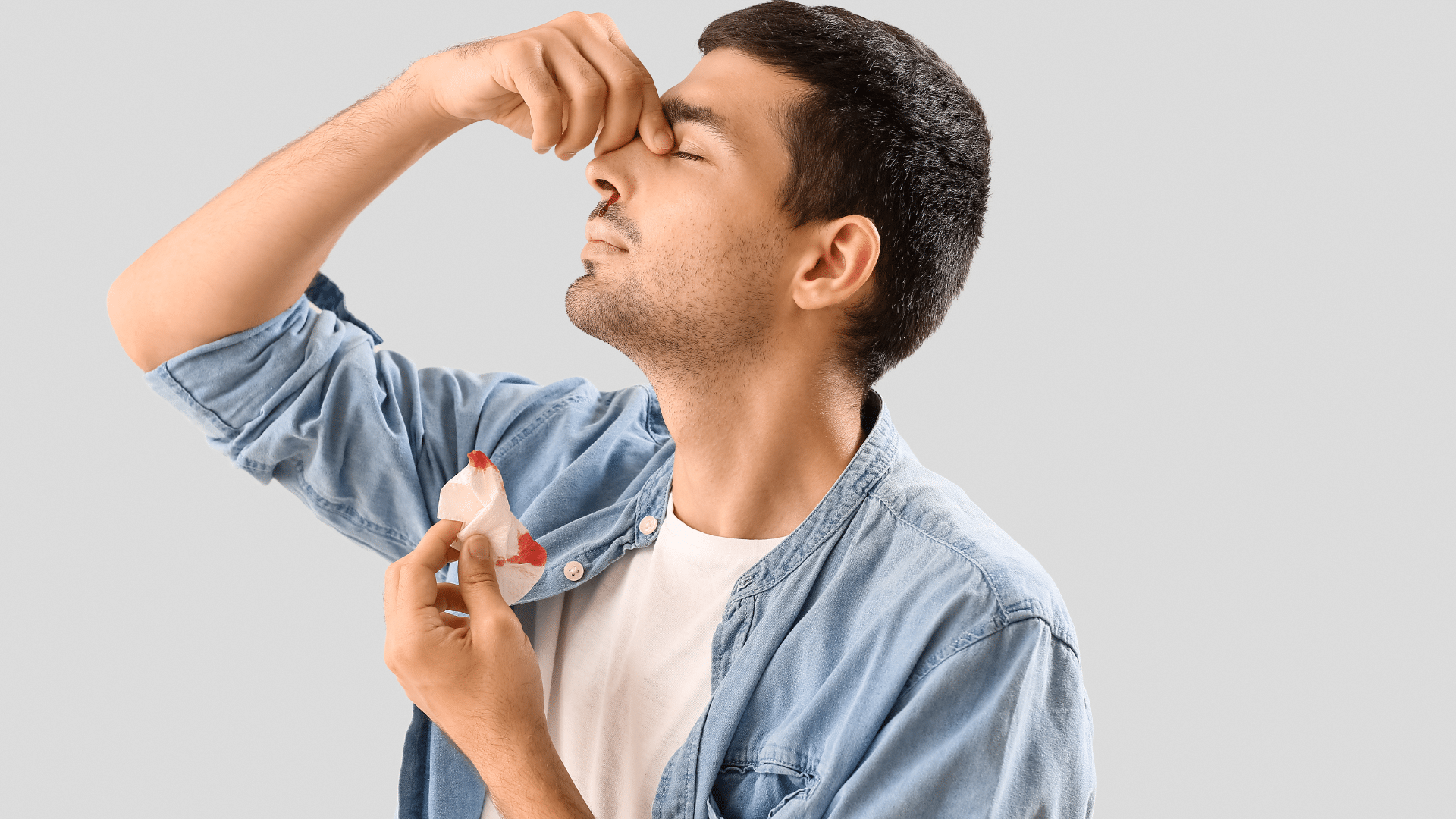Nosebleeds, or medically referred to as Epistaxis, are common and can strike at any moment. While blood trickling out from your nose may appear frightening, most nosebleeds aren’t serious and stop within 5 to 10 minutes. However, rare serious instances of nosebleeds do occur which would require the affected person to visit their doctor. In order to successfully stop your nosebleed, it’s important to determine what’s causing your nose to bleed in the first place. Below, we list common causes of nosebleeds and explain what you can do to stop, and even prevent, future occurrences of unsightly epistaxis episodes.
What Causes Nosebleeds?
A nosebleed that starts in the front of your nose, often referred to as an anterior nosebleed, is generally not serious and should cease after a few minutes. Anterior nosebleeds occur in the septum-side of your nostril and begin after small blood vessels, or capillaries, break open. However, nosebleeds that start from deep inside your nose, often referred to as a posterior nosebleed, may require immediate medical treatment. Posterior nosebleeds occur when larger blood vessels burst which can result in a heavy quantity of blood to flow out of your nose and down your throat. In either case, the cause of your nosebleed can have many origins, including:
- Picking Your Nose
- Allergies
- Blowing Your Nose
- Being in High Altitudes
- An Injury (such as being hit in the nose)
- Medication Side Effects (blood thinners have been known to cause nosebleeds)
How to Stop a Nosebleed
When stopping a common non-serious anterior nosebleed, we have a specific set of rules that should most likely solve your issue:
- Stay Calm: Stress hormones can actually increase blood pressure, which will make your nose bleed more. Remaining calm will actually help stop your nosebleed.
- Posture: Sit up straight and tip your head slightly forward.
- Pinch Your Nostrils Closed: Breathe through your mouth and continue to pinch your nose closed for about 5 minutes.
- Release: If your nose has stopped bleeding, then congratulations! Although, if your nose is still bleeding, repeat the top steps for another 5 minutes.
- Visit Your Doctor: If you’ve repeated the provided steps and your nose hasn’t stopped bleeding after 20 minutes, contact a medical professional immediately.
How to Prevent Nosebleeds
Roughly 60% of people experience nosebleeds, which shows both how common they are and also how a large portion of the population will never experience epistaxis. Additionally, it’s estimated that about 10% of all nosebleed occurrences are serious enough to require medical attention. Often, nosebleeds are random unavoidable occurrences, although here are some tips to help prevent future instances of epistaxis:
- Cotton swab the inside of your nostrils with saline spray or petroleum jelly before bedtime. By keeping your nose moisturized, you can avoid dry nasal membranes that often leads to nosebleeds.
- Protect your nostrils with O2 Nose Filters.
- Turn on a humidifier in your house during cold months.
- Stop smoking! Smoking can dry out the inside of your nose, which can result in nosebleeds.
- Stop picking your nose.
- Refrain from blowing your nose too hard.
- Avoid taking blood thinners.
O2 Nose Filters: A Prevention for Nosebleeds
As mentioned above, O2 Nose Filters can be an ideal solution to help prevent future nosebleeds. O2 Nose Filters has been proven in controlled studies to help protect wearers from inhaling harmful airborne particles such as bacteria, viruses, dust, exhaust fumes, and other pollutants. Independent laboratory tests demonstrate that 3M’s Advanced Electret Media in O2 Nose Filters block 90% of particulates at PM10 and 65% of particulates at PM2.5. Additionally, O2 Nose Filters are comfortable to wear due to their latex-free design and medical-grade Thermoplastic Elastomer (TPE) materials.
3M’s patented AEM™ (Advanced Electret Media) filter technology relies on the principles of electrostatic attraction. The high capture ratios and extended breathability attributed to 3M’s AEM™ material allows airborne particles to be captured within the filter. Rather than using a ‘screen’ approach to block the passage of particles, the charged fibers act as ‘magnets’ to retain particles while still allowing air to pass through, making O2 Nose Filters both breathable and effective.
O2 Nose Filters provides inexpensive and effective security to protect people from harmful airborne diseases. While our nasal passageways try their best when it comes to filtering harmful particulate matter, they aren’t perfect. That’s why O2 Nose Filters are such an effective solution when it comes to improving our mental and physical health. Nose filters are a discreet, effective option to protect against airborne viruses and bacteria. The O2 Nose Filter uses 3M’s patented AEM™ electrostatic technology to capture allergens, viruses, and other particulates, making them a valuable tool for anyone who wants to drastically limit the pollutants and pollens they breathe in daily.

BLOCK IT OR BREATHE IT
Click here for a FREE (+S&H) sample pack to see which size works best for you!



